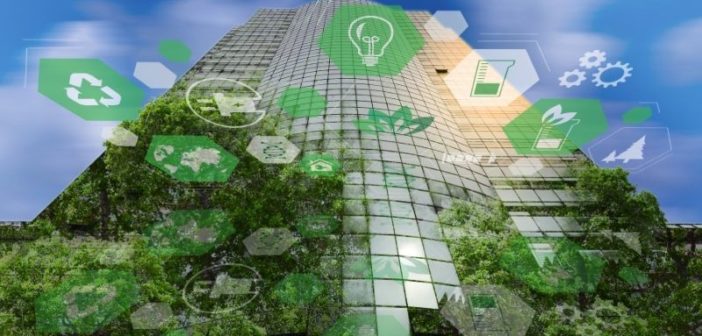In the last few years, we’ve heard a drumbeat about sustainability in business, the climate crisis, and proposed green improvements to the U.S. infrastructure. What can businesses and their employees do to support sustainability goals while using technology, and how can we create awareness of the steps towards sustainability within our reach, and empower all of us to take action? From a technology company’s perspective, there are practical ways to combat the climate crisis, by lowering energy consumption, using hardware for longer, and adopting responsible IT Asset disposal services, for example. From the individual employee’s point of view, green practices may be followed rigorously by some. Others may have developed a bit of blasé feeling due to the overload of information being frequently disseminated on the subject and need more incentives.
Going Green Does Pay Off
Sustainability in business has moved firmly into the mainstream, in part driven by government regulations to lower carbon emissions. However, many types of businesses who effectively practice sustainability can realize a number of benefits in addition to helping the planet:
- Investor interest: Businesses looking for funding, whether early stage or more mature, will find that investors expect to see a sustainability strategy along with a growth strategy. Governmental and customer pressures on companies to support climate improvement are causing investors now to consider environmental strategy a requirement for consideration.
- Better ROI: Energy and e-waste reduction can significantly benefit the bottom line, as well as reusing and recycling products and materials where feasible. Using a lean, efficient operating system on endpoint devices can prolong the life of a device by three years or more and allows the use of thin clients and other small, energy-efficient alternatives to traditional power-hungry PCs.
- Positive brand equity: An extensive consumer study by McKinsey and Nielsen IQ shows that products making environmental, social, and governance (ESG) related claims are getting more consumer traction: averaging a 28 percent cumulative growth over a five-year period from 2017 to 2022, compared to 20 percent for products making no claims.
- Customer loyalty: The McKinsey/NielsenIQ study also found a correlation between ESG claims and customer repeat business: “Brands that garner more than half of their sales from products making ESG-related claims enjoy 32 to 34 percent repeat rates (meaning that buyers purchase products from the brand three or more times annually).”
- Employee recruitment: Recruiting the next generation requires much greater sensitivity to your company’s impact on the environment and whether you can make a strong enough case to a recruit that you are supporting lowering carbon emissions. Gen Y recruits care about the environment; Gen Z even more so. These cohorts are your future tech and green planet savvy workforce.
Technology providers can learn from consumer and recruitment studies by making sure they have credible sustainable messaging for their green-conscious customers. Claims need to be backed up to avoid ‘greenwashing’ issues. Conservation efforts will be rewarded in helping attract new employees and in customer loyalty. For technology companies, repeat business can be on a longer lead cycle but the imperative to have long-term loyal customers is the same.
A Software Focus Aids Conservation
A positive trend is companies shifting to the cloud and software-focused computing via virtual desktop infrastructure (VDI), Desktop-as-a-Service (DaaS), and Software-as-a-Service (SaaS). Cloud environments decrease an organization’s reliance on energy-hungry legacy data centers. By combining software-run cloud workspaces with repurposed legacy hardware, a company can reduce its carbon footprint. Hardware is a significant contributor to power consumption and carbon emission. Postponing purchase of new hardware equipment can reduce emissions from 425,983 kgCO2 to 169,945 kgCO2. By taking applications off a hardware device and moving them to the cloud, a company can use existing hardware as a much more lean, efficient endpoint platform. Application updates then occur in the cloud, with a faster, more accurate and less energy consuming process.
With a widely distributed remote/hybrid workforce now the standard, taking this software-led approach also conserves energy. Powered by secure non-Windows endpoints, cloud workspaces, along with less commuting and supply chain impact, can reduce emissions by 40 percent. Employees and contractors can use a variety of existing devices, accessing their needed applications from the cloud, independent of a specific piece of hardware or location.
Teaming Up to Protect the Planet
Employees, whether remote or on-premises, are the other half of the conservation equation. Besides using software and relying less on expensive, resource-intense hardware, they need to responsibly manage IT asset disposal to reduce toxic e-waste in landfills. Partnering with an environmentally certified IT asset disposal service to manage and recycle e-waste has an immediate and positive impact to reduce e-waste and its harmful effect on the environment and human health.
Company devices employees use, and company equipment on-premises or in data centers, must be recycled. Precious metals and minerals used in devices -when recycled – reduce the demand for mining natural resources.
We know recycling in all forms – e-waste, plastic, metal – is a valuable activity but day-to-day diligence can suffer. Companies can support a number of activities to reinforce awareness of recycling and conservation. Partnering with sustainability organizations is an effective way to engage the workforce. Plant-for-the-Planet is one example. It supports the Trillion Trees campaign to mobilize tree planting to restore forest ecosystems. A company can participate by committing to planting and protecting a designated number of trees.
Besides partnering, companies can motivate green activities by offering innovation awards to employees with great ideas on further waste reduction, or in-team contests to see who can conserve the most over the course of a quarter.
Most importantly, as Gen Y and Gen Z are the workforce of the future, authenticity counts. Create a clear, doable sustainable goal for your company, carry that messaging through company communications, and engage all employees in sustainability actions.
Related News:
IGEL Partners with Plant-for-the-Planet to Assert Commitment to Sustainability
AMD Drives Corporate Responsibility Through Innovation And Partnerships

